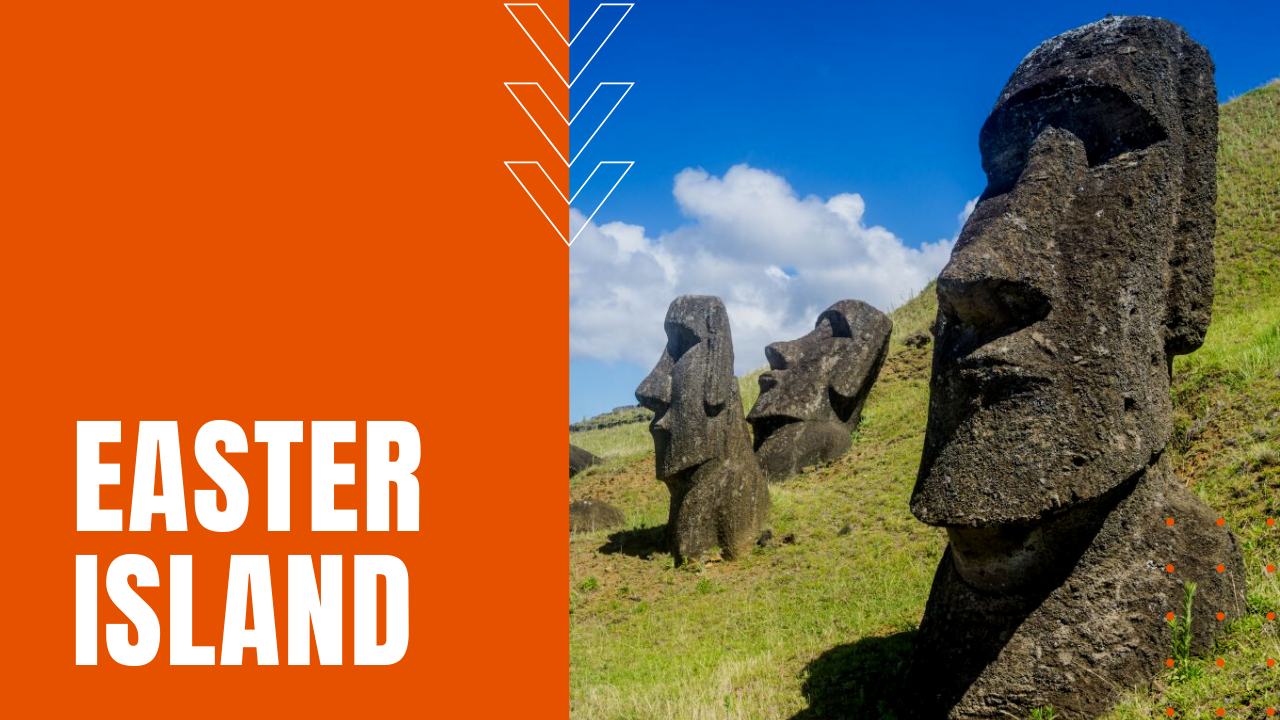Easter Island: Location, Statues, and Fate of Rapa Nui People

Many hundreds of years ago, displaced Polynesians rowed or sailed wooden outriggers across a barren expanse of open ocean, landing on a 63-square-mile remote island named Rapa Nui, after navigating for countless days and nights by stars, wind and ocean drift.
Where is Easter Island?
Located some 2,300 miles west of South America and 1,100 miles from the nearest island, Rapa Nui holds the distinction as the most remote inhabited island on the planet, and while debate continues regarding when or why Polynesians arrived onto the now Chilean possession of Easter Island, radiocarbon dating from archaeological artifacts place humans onto Rapa Nui anywhere from 800 to 1200 A.D.
Easter Island Statues
Blessed by a dense jungle of palm trees, the early Rapa Nui people flourished through farming and fishing, creating thriving communities that included specialized craftsmen who carved some 887 volcanic stone monoliths known as moai tributes to their ancestors.
Averaging 13 feet in height and weighing 14 tons each, the moai of Easter Island were carved and stationed about the island from 1100–1680 A.D., until the Rapa Nui people mysteriously disappeared or migrated off the island.
What Happened to the Rapa Nui People?
Many theories abound over the demise or migration of the Rapa Nui people, but the most accepted theories include the deforestation of palm trees for cooking fuel and land clearing for agriculture, which in turn eroded nutrient-rich soil until farming became unsustainable. Still, others point to overpopulation by Polynesian rats, who ate palm tree seeds until new growth became equally untenable.
By the time Dutch explorers arrived on Easter Island on Easter Sunday, 1722, Rapa Nui was little more than a barren rock, while the introduction of foreign diseases such as smallpox and syphilis killed off most of the remaining Rapa Nui people, leaving a skeletal population of 111 native inhabitants by 1877.
Today, Easter Island is home to some 7,750 people, including 3,512 who consider themselves of Rapa Nui ancestry, while the majority of residents on Rapa Nui make their living from tourism. Hanga Roa, the island’s only urban center, is home to some 90% of the island’s population, while Rapa Nui itself sports one of the largest aviation tarmacs in the world, which was built as an emergency landing site during NASA’s 34 years of Space Shuttle flights, making Easter Island a fascinating yet distant paradise in the dizzying expanse of Polynesia.
